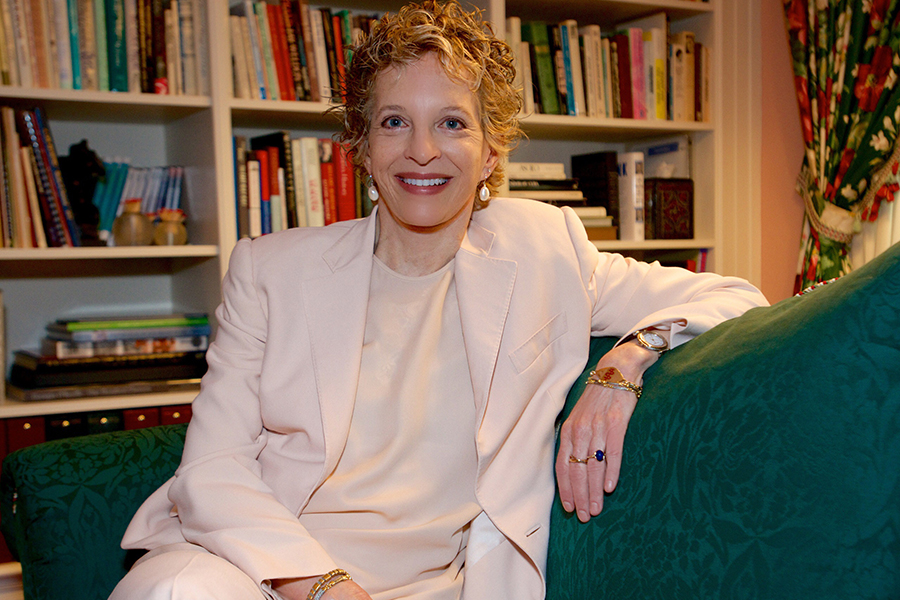Thirty-two years ago, Dr. Nanette Gartrell launched a project to follow the first wave of lesbian families created through donor insemination. Now, her National Longitudinal Lesbian Family Study (NLLFS) is the longest-running study on LGBTQ-parent families, and Gartrell and her team have just released a paper about the now-grown children at 25 years old.
Gartrell, a psychiatrist and Visiting Distinguished Scholar at the UCLA School of Law’s Williams Institute, spoke with me about the latest results and more.
Gartrell and her colleagues began interviewing the mothers in 84 lesbian families in 1986, when they were inseminating or pregnant, then when their children were a year-and-a-half to 2 years old, 5, 10, 17 and 25. (Limited resources meant they did not also look at adoptive families.) They directly questioned the children at 10, 17 and 25.
In their latest paper, in the peer-reviewed New England Journal of Medicine, they looked at the mental health of the 25-year-olds “because the peak incidence of many psychiatric disorders occurs during emerging adulthood,” they wrote. They matched the 77 adult offspring in the NLLFS with a population-based sample of 77 adults of comparable age, sex, race/ethnicity and education, and found “no significant differences in measures of mental health” between the two groups, including the presence of behavioral or emotional problems, scores on mental-health diagnostic scales and percentages of scores in the borderline or clinical range.
That might not surprise those familiar with the earlier results. When the children were 17, the NLLFS had shown they were well-adjusted and happy, even in the face of discrimination and stigma, and “rated higher than their peers in social, academic, and overall competence, and lower in aggressive behavior, rule-breaking, and social problems, on standardized assessments of psychological adjustment.”
One thing that surprised her about the 25-year-olds, though, Gartrell said, is their ongoing “enthusiasm for participation,” which she thought might wane when they left home. Instead, she received an “overwhelming” number of responses saying, “We’ll continue as long as you’re willing to do it; this is so important to so many people.” In fact, there have been no dropouts since the kids were 10 years old, giving the NLLFS a 92-percent retention rate, which she finds “remarkable.”
How to explain the children’s outcomes? “These are pioneer parents,” Gartrell said. “The fact that these parents were so committed to being very good parents and did a wonderful job of being involved in [their children’s lives] every step along the way I think is responsible for producing the good outcomes. I think that would be the case regardless of the sexual orientation or gender identity of the parent.”
Some people looking to discredit LGBTQ parents have doubted the NLLFS findings because of its relatively small sample size and self-selected participants. One strength of NLLFS, Gartrell said, is that neither the parents nor their children volunteered after the children were already doing well — the parents started before the children were born and had no idea how they’d turn out. “We have as a result very, very strong data showing that they are doing quite well and that all those stereotypes and assumptions have absolutely no scientific merit.”
One legitimate criticism of the NLLFS is that the vast majority of families in it are white and middle- or upper-middle- class — but Gartrell explained that in 1986, many prospective lesbian parents were “terrified about losing custody of their children. There was no opportunity to obtain a representative national sample.” The researchers acknowledge the limitations, though, calling in their latest paper for their results to be replicated in a larger population with racial, ethnic and socioeconomic diversity and across the LGBT spectrum.
Evidence from dozens of other studies, however, including ones from the NLLFS team using data from nationally representative, population-based samples, supports the broad NLLFS findings that children of lesbian parents do just as well as their peers.
While the latest NLLFS paper says its results will be useful for medical professionals consulted on the mental health of young adults with sexual-minority parents, the implications go farther. “Our findings show there is no justification for restricting child custody, child placement or access to reproductive technologies based on the parent’s sexual orientation,” Gartrell said.
That takes on renewed importance today, when 10 states now allow publicly funded adoption and foster-care agencies to refuse services to LGBTQ parents and children (among others) if providing them conflicts with the agency’s religious beliefs — and a bill in Congress would allow the same nationwide. “It would be wonderful to be in a place where we didn’t need to continue to address the assumptions that were made in the 1970s that unfortunately have reared up again very vividly in the last couple of years,” said Gartrell.
Beyond politics, the NLLFS results also teach us about the particular aspects of lesbian families and offer lessons for all. Even when the children were only 10, for example, Gartrell noted “how important it was to them for all people to be accepted for who they are and for differences to be appreciated. The kind of education that goes into creating that kind of perspective in a child is really quite phenomenal.” She credited the parents’ own experiences of discrimination and “wanting to make their children’s lives better based on their understanding of it.”
“So much conflict in this world is based on a fear of difference,” she added. “Appreciation of difference is a great need that we have in our country and our world. I see these kids as having been given that gift from their parents.”
Dana Rudolph is the founder and publisher of Mombian (mombian.com), a GLAAD Media Award-winning blog and resource directory for LGBTQ parents.
